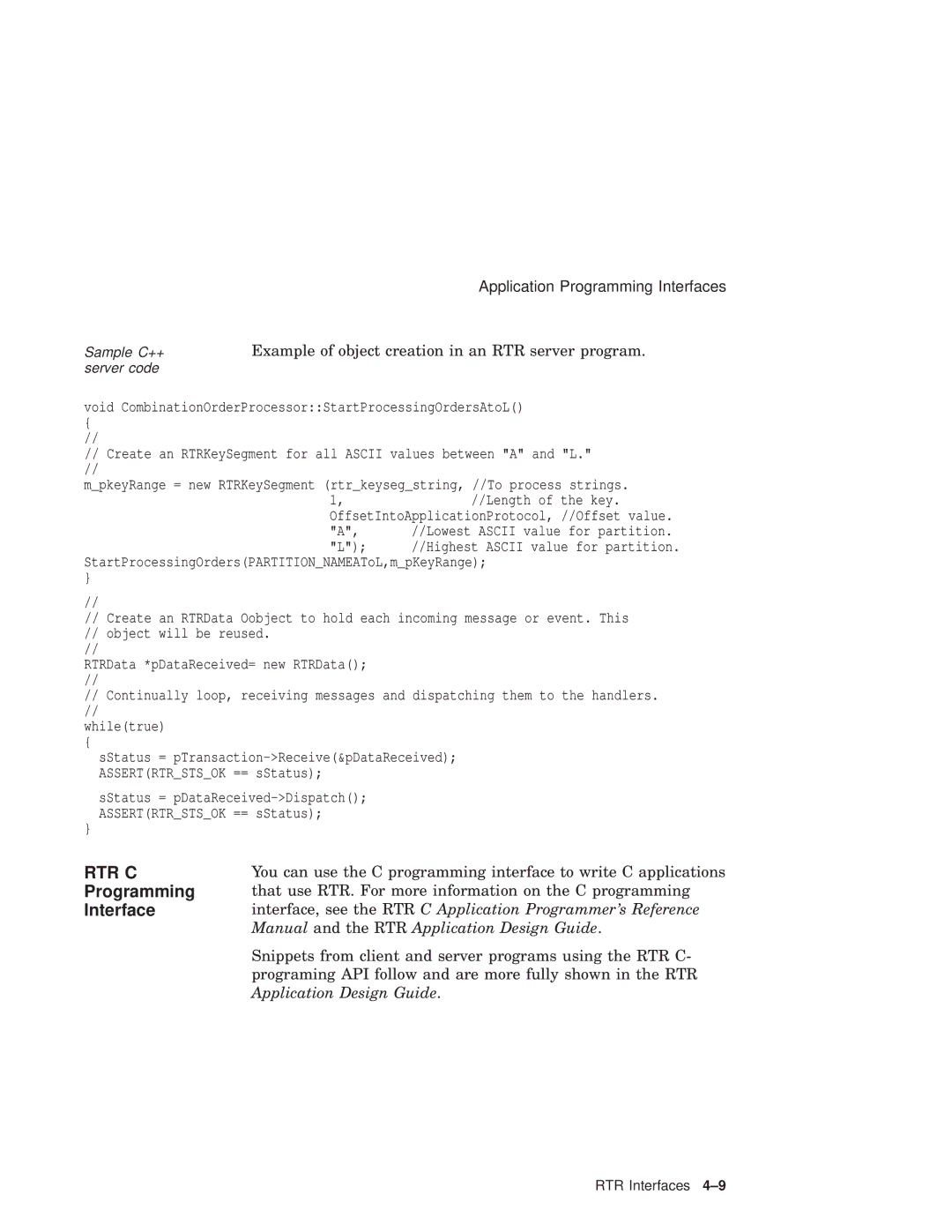| Application Programming Interfaces |
Sample C++ | Example of object creation in an RTR server program. |
server code |
|
void CombinationOrderProcessor::StartProcessingOrdersAtoL()
{
//
//Create an RTRKeySegment for all ASCII values between "A" and "L."
m_pkeyRange = new RTRKeySegment (rtr_keyseg_string, //To process strings.
1,//Length of the key. OffsetIntoApplicationProtocol, //Offset value.
"A", | //Lowest ASCII value for partition. |
"L"); | //Highest ASCII value for partition. |
StartProcessingOrders(PARTITION_NAMEAToL,m_pKeyRange);
}
//
//Create an RTRData Oobject to hold each incoming message or event. This
//object will be reused.
//
RTRData *pDataReceived= new RTRData();
//
//Continually loop, receiving messages and dispatching them to the handlers.
while(true)
{
sStatus =
sStatus =
}
RTR C | You can use the C programming interface to write C applications |
Programming | that use RTR. For more information on the C programming |
Interface | interface, see the RTR C Application Programmer's Reference |
| Manual and the RTR Application Design Guide. |
| Snippets from client and server programs using the RTR C- |
| programing API follow and are more fully shown in the RTR |
| Application Design Guide. |
RTR Interfaces
